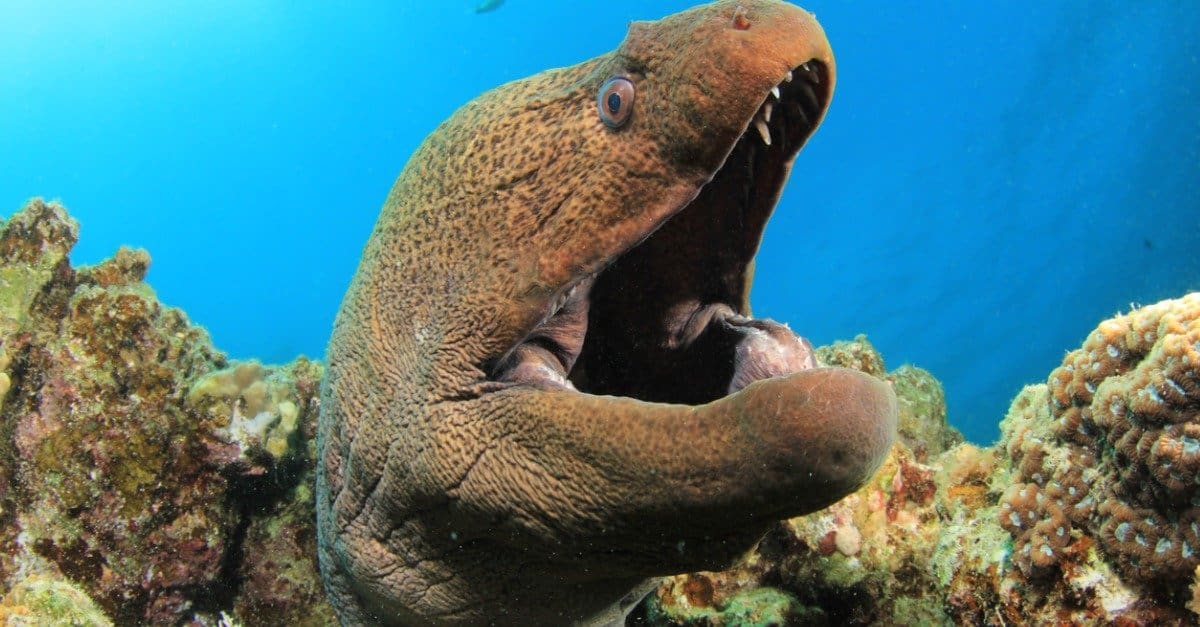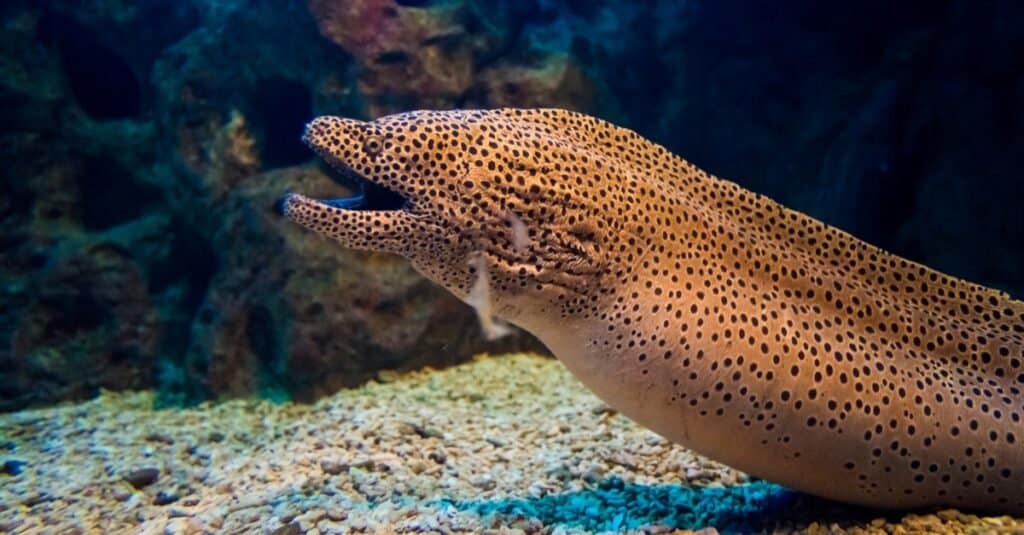Continue reading for our analysis...

If you have read this title and are thinking it’s impossible for a regular eel to swallow something like a great white shark, you would of course be correct. But this is no regular eel and the shark involved was a small white-tip reef shark. The footage has been viewed over three million times but who will you be rooting for – the eel or the shark? The end result may surprise you!
Moray Eels As Hunters
The mighty moray eel (Muraenidae) is found in both coastal and deep waters in many locations all over the world. Everything about this incredible animal is long! It has a long body, a long dorsal fin that often runs the length of its back, and a long snout. Some can be up to 13 feet long and they have toxic mucus covering their body.
Moray eels have small gills, so they need to open up their mouths and pump water through them. You will often see them with their mouths open – they are breathing not waiting to attack! As well as small sharks, they feed on squid and crustaceans but it’s their method of capturing prey that is most fascinating!

Moray eels have two sets of jaws for grasping and transporting prey
©Ewa Studio/Shutterstock.com
Second Jaws for Grasping Prey
Somehow, this slender creature manages to get large and struggling animals down its throat. It can do this because it has two sets of jaws. It starts by grasping the prey in its oral cavity jaws. Here, there are sharp teeth that curve backward so they pierce the animal and prevent it from getting back out of the mouth.
Then, a second set of jaws (the pharyngeal jaws) behind the eel’s skull move forward and snatch the prey bringing it back towards the food pipe (esophagus) ready for swallowing. It may also use this second set of jaws to transport prey. A second set of jaws is not unique. It is estimated that around 30,000 fish species have a second set of jaws in their throat region. But it is thought that they only use them for grinding or crushing the prey.
Despite these amazing features, this particular moray managed to lose the shark. Almost the entire body was inside the eel when it gave a final wriggle and managed to work its way back out. The white-tip reef shark looks a bit stunned by the experience but manages to swim away!
Thank you for reading! Have some feedback for us? Contact the AZ Animals editorial team.





